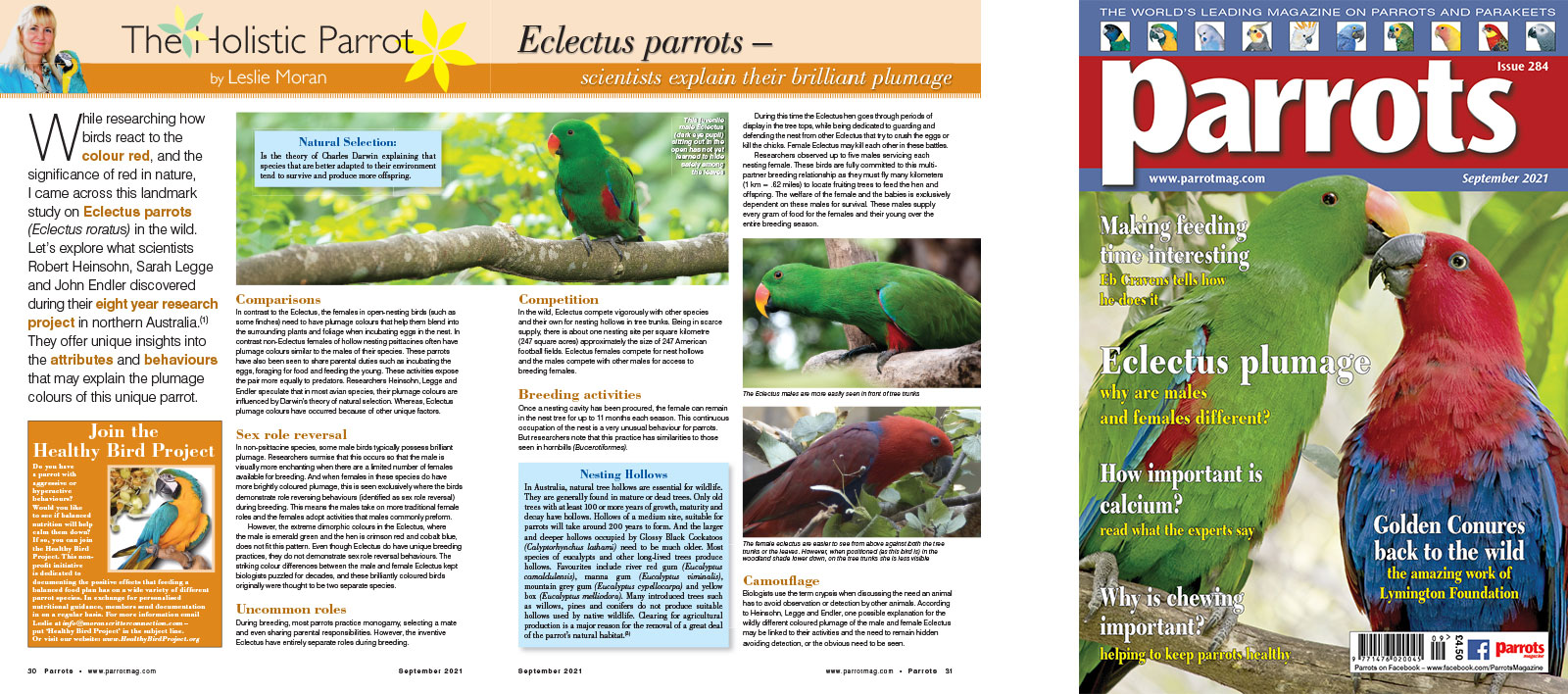
The Holistic Parrot by Leslie Moran
While researching how birds react to the colour red, and the significance of red in nature, I came across this landmark study on Eclectus parrots (Eclectus roratus) in the wild. Let’s explore what scientists Robert Heinsohn, Sarah Legge and John Endler discovered during their eight year research project in northern Australia. They offer unique insights into the attributes and behaviours that may explain the plumage colours of this unique parrot.
In contrast to the Eclectus, the females in open-nesting birds (such as some finches) need to have plumage colours that help them blend into the surrounding plants and foliage when incubating eggs in the nest. In contrast non-Eclectus females of hollow nesting psittacines often have plumage colours similar to the males of their species. These parrots have also been seen to share parental duties such as incubating the eggs, foraging for food and feeding the young. These activities expose the pair more equally to predators. Researchers Heinsohn, Legge and Endler speculate that in most avian species, their plumage colours are influenced by Darwin’s theory of natural selection. Whereas, Eclectus plumage colours have occurred because of other unique factors.
In non-psittacine species, some male birds typically possess brilliant plumage. Researchers surmise that this occurs so that the male is visually more enchanting when there are a limited number of females available for breeding. And when females in these species do have more brightly coloured plumage, this is seen exclusively where the birds demonstrate role reversing behaviours (identified as sex role reversal) during breeding. This means the males take on more traditional female roles and the females adopt activities that males commonly preform.
